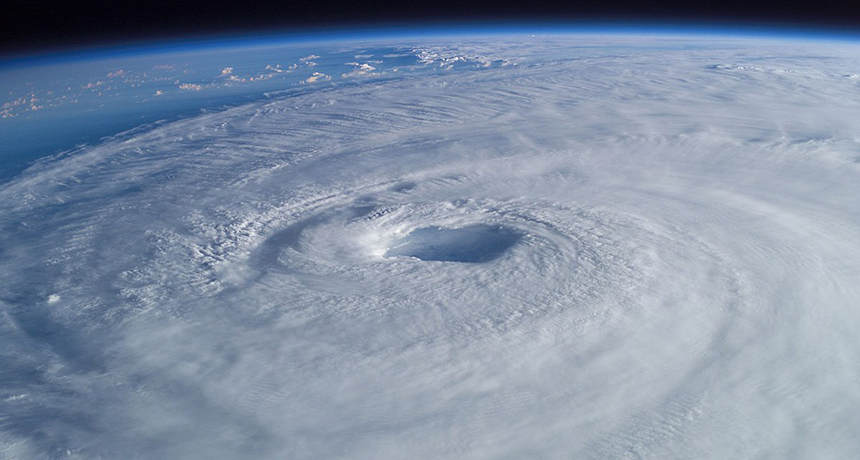Atlantic One of the world’s five oceans, it is second in size only to the Pacific. It separates Europe and Africa to the east from North and South America to the west.
cloud A plume of molecules or particles, such as water droplets, that move under the action of an outside force, such as wind, radiation or water currents. (in atmospheric science) A mass of airborne water droplets and ice crystals that travel as a plume, usually high in Earth’s atmosphere. Its movement is driven by winds.
cyclone A strong, rotating vortex, usually made of wind. Notable examples include a tornado or hurricane.
equator An imaginary line around Earth that divides Earth into the Northern and Southern Hemispheres.
eye (in atmospheric sciences) The roughly circular area of comparatively light winds that encompasses the center of a severe tropical cyclone. The eye is either completely or partially surrounded by the eyewall cloud.
eyewall Also known as a wall cloud, it’s an organized band or ring of cumulonimbus clouds that surround the eye, or light-wind center, of a tropical cyclone.
hurricane A tropical cyclone that occurs in the Atlantic Ocean and has winds of 119 kilometers (74 miles) per hour or greater. When such a storm occurs in the Pacific Ocean, people refer to it as a typhoon.
Pacific The largest of the world’s five oceans. It separates Asia and Australia to the west from North and South America to the east.
pressure Force applied uniformly over a surface, measured as force per unit of area.
tropical cyclone A strong, rotating storm. These usually form over tropical areas around the equator where the water is warm. Tropical cyclones have strong winds of more than 119 kilometers (74 miles) per hour and usually have heavy rain. Large ones in the Atlantic are known as hurricanes. Those in the Pacific are termed typhoons.
typhoon A tropical cyclone that occurs in the Pacific or Indian oceans and has winds of 119 kilometers (74 miles) per hour or greater. In the Atlantic Ocean, such storm are referred to as hurricanes








